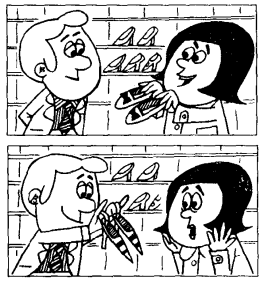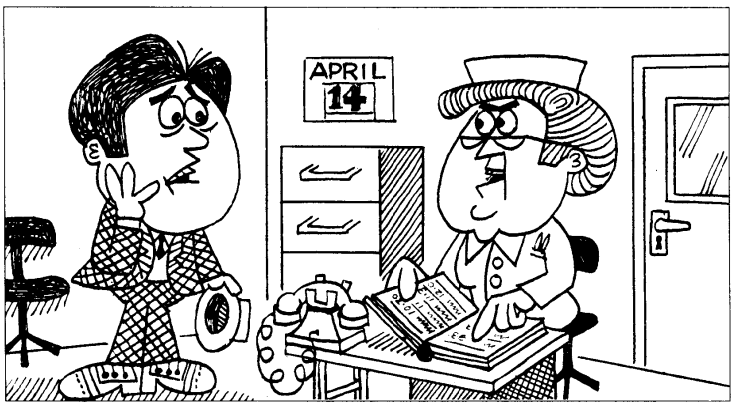one|Lesson 71~80
Lesson 71~72
✨课文

✨单词
动词过去式变化
⚡本课重点
在67~68课中学习的主要是「主系表结构」的一般过去时。而本节课则主要学习其「主谓宾结构」的一般过去时,核心结构是 主语+V.ed,它的谓语是实义动词V.ed
主谓宾结构一般过去时:隐式助动词did表示动作发生的时间
肯定句:表示过去发生的动作、或存在的事实、状态。
主语+V.ed(+其他)e.g. I loved you.、He talked to me yesterday.、We played with our parents yesterday.
否定句:只需将实义动词改为原形并在其前面加上
did not即可。主语+did not+V.(+其他)e.g. I did not live in Beijing last year.、He didn't talk to me yesterday.
一般疑问句:只需将实义动词改为原形并把
did加到句首(主语前面)即可。Did+主语+V.(+其他)e.g. Did you love me?、Did he talk to me yesterday?
特殊疑问句:在一般疑问句的句首加上特殊疑问词并去掉答案。
特殊疑问词+did+主语+V.(+其他)e.g. He talked to me yesterday. => Did he talk to me yesterday? => What did he do yesterday?
先把陈述句中的
实义动词改为原形,然后在句首加上did得到一般疑问句,最后用what对一般疑问句中的答案talk to me进行提问,并将what提到句首
动词过去式和过去分词的变化:
①一般的动词后面直接加
ed清辅音后面加
ed时,读/t/e.g. talk => talked
浊辅音或元音后面加
ed时,读/d/e.g. need => needed
②以不发音的
e结尾的动词,直接在词尾加de.g. love => loved、live => lived
③以辅音字母加
y结尾的动词,变y为i再加ede.g. study => studied、carry => carried
④以元音字母加
y结尾的动词,直接在词尾加ede.g. play => played
⑤以短元音加一个辅音字母结尾的动词(往往以重读闭音节的形式出现,即
辅元辅),先双写这个辅音字母再加ede.g. stop => stopped、plan => planned
⑥以
ic结尾的动词,直接在词尾加kede.g. traffic => trafficked、picnic => picnicked
⑦不规则变化
e.g. do => did、say => said
time
作为不可数名词时,表示「时间」
作为可数名词时,表示「次数」。3次或3次以上时,通常用
数词+timese.g. once、twice、three times
speak to sb.:表示「与某人说话」
Lesson 73~74
✨课文

✨单词
形容词变副词
⚡本课重点
副词:它在句子中的作用是「修饰动词作状语」。它对动词进行补充说明,告诉我们所修饰的动词在句子中的动作的状态、程度。副词可以是单个的词或词组
形容词变副词的规则
①一般情况下直接在词尾加
lye.g. quick => quickly、pleasant => pleasantly
②以辅音字母加
y结尾词尾
y的发音为/i/的形容词,变y为i再加lye.g. happy => happily、thirsty => thirstily
词尾
y的发音为/ai/的形容词,直接在词尾加ly
③以辅音字母加
le结尾的形容词,变e为ye.g. simple => simply
④以不发音的
e结尾的形容词,去掉e后再加lye.g. true => truly
⑤以
ic结尾的形容词,直接在词尾加allye.g. economic => economically
⑥以
ll结尾的形容词,直接在词尾加ye.g. dull => dully
⑦形容词和副词同形
e.g. hard => well
Lesson 75~76
✨课文

✨单词
陈述句宾语从句
⚡本课重点
本节课先主要学习陈述句做宾语从句的相关概念和基础知识,往后的99~100课和133~136课还会巩固学习这方面的知识
宾语从句:一个句子来充当宾语就叫做宾语从句。主句和从句之间用that连接,但that是可以被省略的。当主句是一般现在时,从句可以用任何时态
跟在表示人的情感或心理活动的形容词后面。
主语+be+形容词(+that)+从句e.g. I'm afraid that I can't come tomorrow.、I'm glad that you can help them.
跟在普通动词后面。
主语+V(+that)+从句e.g. I think that you are right.、She knows that you will come.
给某人买某物
buy sth. for sb.e.g. I bought a book for my sister 2 weeks ago.
buy sb. sth.e.g. She bought her boyfriend a watch.
Lesson 77~78
✨课文

✨单词
⚡本课重点
在之前的69~70课已经初步了解了at、on、in三者在时间表示上的区别,本节课继续做补充
at用于小地点或钟点时刻的前面
- e.g.
at home、at six o'clock
on用于星期的前面或一个月中的具体某一天
- e.g.
on Monday、on April 1st
in用于月份、季节、国家或大地点的前面
- e.g.
in March、in sumber、in China、in Beijing
Lesson 79~80
✨课文

✨单词
have got
⚡本课重点
have和have got:两者所表达的意思相同,都是「有」。have got通常用于口语中,在「过去时态」和「重复动作」这两种情况下,have/has got不能代替have
- e.g. I have a car. = I have got a car.
注意,虽然have got在形式上看起来和现在完成时的结构很像,但have got并不属于现在完成时,它只是英语在演变过程中产生的一种习惯用法罢了
肯定句:表示某人有某物。
主语+have/has got+其他e.g. I have got a car. = I've got a car.、He has got a car. = He's got a car.
否定句:直接在
have或has的后面加上not即可,也可以用助动词do/does。主语+haven't/hasn't got+其他e.g. I haven't got a car. = I don't have a car.、He hasn't got a car. = He doesn't have a car.
一般疑问句:只需将
have或has提到句首(主语前面)即可,也可以用助动词do/does。Have/Has+主语+got+其他e.g. Have you got a car? = Do you have a car?、Has he got a car? = Does he have a car?
特殊疑问句:在一般疑问句的句首加上特殊疑问词并去掉答案。
特殊疑问词+have/has+主语+got+其他e.g. I have got a car. => Have you got a car? => What have you got? = What do you have?
先把陈述句中的
have提到句首得到一般疑问句,再用what对一般疑问句中的答案a car进行提问,并将what提到句首
need:单词本义为「需要」
当作为情态动词时,没有人称、数和时态上的变化,可以直接对其加
not构成否定形式,常用于否定和疑问句中。need+V.e.g. You needn't hurry.、Need I make an appointment?
当作为实义动词时,就要有人称、数和时态上的变化,能用在各种句式中,否定和疑问句时需要用助动词
do/does。need(+to)+V.e.g. He needs some rest.、I don't need to rest.、Do you need to rest?
much和many:都表示「许多」
much:修饰不可数名词,用在否定和疑问句中
e.g. There isn't much tea on the table.、How much money do you want?
many:修饰可数名词,能用在各种句式中
e.g. There are many cars in the park?、There aren't many dishes in the kitchen?、How many photos did you take?
a lot of:表示「许多」。既可修饰可数名词,也可以修饰不可数名词,能用在各种句式中
- e.g. I've got a lot of money.、We've got a lot of apples.、He hasn't got a lot of free time.
转换为在否定和疑问句
如果
a lot of后面跟可数名词,则把a lot of换成manye.g. I've got a lot of friends.、I haven't got many friends.、Have you got many friends?
如果
a lot of后面跟不可数名词,则把a lot of换成muche.g. I've got a lot of money.、I haven't got much money.、Have you got much money?